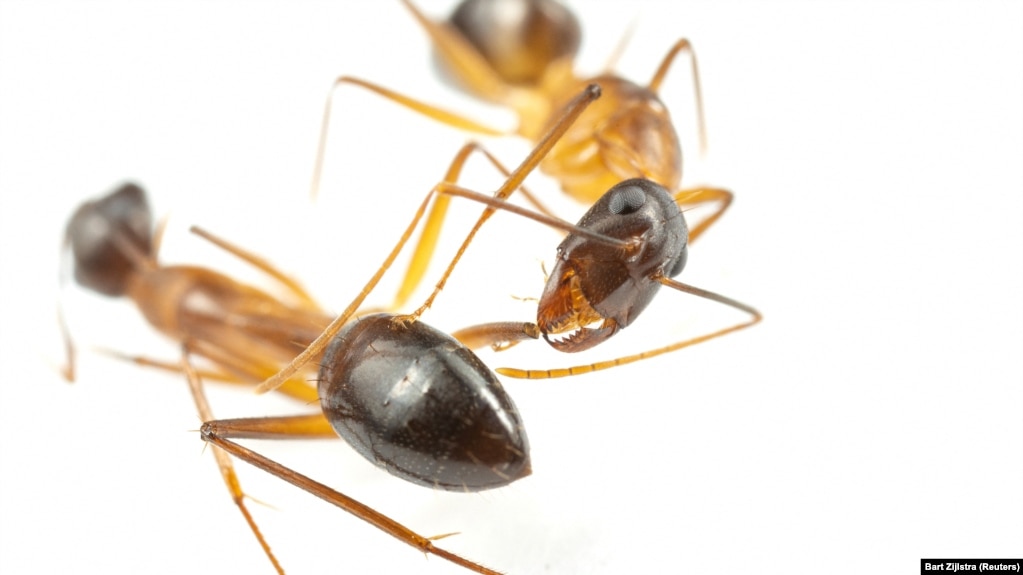AUDIO
Ants Can Perform Amputations to Save Lives

Human doctors perform amputations, or removal of an arm, leg, or finger, after a serious injury. The purpose of this action is to prevent infection or disease. But humans are not alone in doing them.
New research shows that some ants perform amputations on injured ants to help them survive an injury. The behavior was documented in Florida carpenter ants, also known by their scientific name Camponotus floridanus. The reddish-brown insect is about 1.5 cm long. They live in parts of the southeastern United States.
Lifesaving care
Scientists said they observed these ants treating injured ants in the colony in two ways. They either cleaned the wound using their mouthparts or amputated the limb, or leg, by biting it off. The choice of care depended on the injury's location. When it was further up the leg, they always amputated. When it was further down, they never amputated.
Erik Frank of the University of Würzburg in Germany is the lead writer of the research. It appeared recently in the publication Current Biology. Frank said the study describes “for the first time how a non-human animal uses amputations on another individual to save their life."
He believes “that the ants' 'medical system' to care for the injured is the most sophisticated in the animal kingdom,” and compares well to human medicine.
Decision made after injury
The researchers studied injuries to the upper part of the leg, the femur, and the lower part, the tibia. Such injuries are commonly found in different kinds of ants while fighting and hunting among insects and animals.
However, they watched the ants in a laboratory.
Frank said that the ants “decide between amputating the leg or spending more time caring for the wound. How they decide this, we do not know. But we do know why the treatment differs.”
It has to do with the flow of hemolymph, the bluish-green fluid equivalent to blood in most invertebrates, or animals without a backbone.
Timing is important
"Injuries further down the leg have an increased hemolymph flow,” Frank said. So harmful bacteria can enter the body after only five minutes. An amputation would not help infection after that time.
He continued, “Injuries further up the leg have a much slower hemolymph flow, giving enough time for timely and effective amputations.”
In either case, the ants first cleaned the wound using fluids from their mouth. The amputation process itself takes at least 40 minutes and sometimes more than three hours. The ants keep biting the patient at the shoulder.
The study found that after an upper leg injury, an ant who experiences amputation has a survival rate of 90 to 95 percent. For lower leg injuries in which just cleaning was performed, the survival rate was about 75 percent, compared to about 15 percent for injuries that received no care.
Ants can function well without one of their six legs. And only female ants perform the treatment of wounds by cleaning or amputation.
"All worker ants are female. Males play only a minor role in ant colonies," Frank said.
Why do the ants do this?
So why do ants do these amputations?
Frank said, "There is a very simple evolutionary reason for caring for the injured. It saves resources.” He noted that if an ant could be saved with little effort to remain productive, “there is a very high value of doing so.”
“At the same time, if an individual is too heavily injured, the ants will not care for her, but rather leave her behind to die," Frank added.
______________________________________________
Words in This Story
limb – n. a leg or arm
sophisticated – adj. highly developed and complex
invertebrate – n. a type of animal that does not have a backbone
role – n. the part that someone has in a family, society, or other group
evolution – n. a theory that the differences between modern plants and animals are because of changes that happened by a natural process over a very long time
https://learningenglish.voanews.com/a/ants-can-perform-amputations-to-save-lives/7686795.html